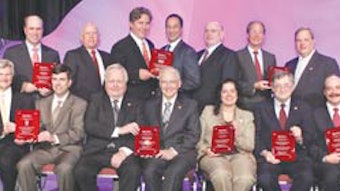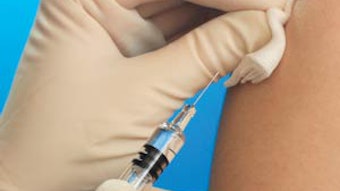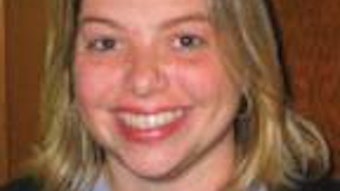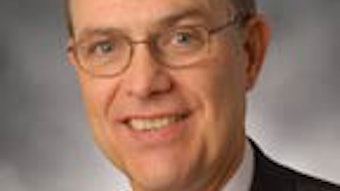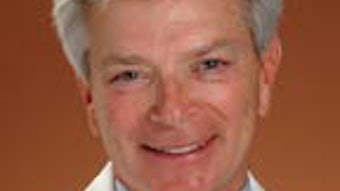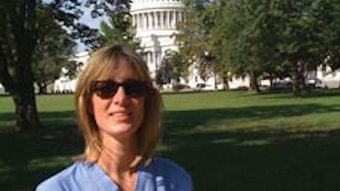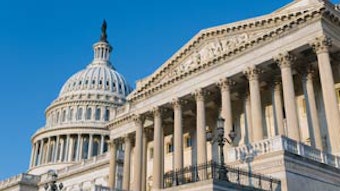Dispensing Hearing Aids in New York
Sujana S. Chandrasekhar, MD, Chair-Elect, BOG New York is the only state in the U.S. that enforces an arcane law by which the only professional NOT permitted to profit more than 10 percent from hearing aid sales is a physician. Independent audiologists and hearing aid dispensers, with their limited years of education and ability to offer solutions for hearing loss, can and do profit enormously from the sale of hearing instruments. Because they cannot offer medical or surgical care for the individual’s hearing loss, their advice is likely skewed toward a sale. New York otolaryngologists, led forcefully by Hayes H. Wanamaker, MD, Gavin Setzen, MD, Paul E. Hammerschlag, MD, and Steven M. Parnes, MD, with strong backing by the Medical Society of the State of New York (MSSNY), and the guidance of AAO-HNS Government Affairs staff, have been remarkably effective at unearthing the background of this old legislation. They brought the matter before legislators, built a coalition, and even had a bill to repeal the current law introduced during the last legislative session. It is unusual to achieve such success in such a short period of time. The Patient Access to Hearing Aids (PAHA) Coalition, comprised of state and national medical and specialty organizations and others, continues its work to educate legislators, both in their district offices and in Albany, about the need for a change. I had a wonderful experience going to Albany with one of my residents, Gregg Goldstein, MD, whom I was able to mentor through the nuances of effective lobbying. For his part, Dr. Goldstein was able to see that so many physicians took time out of their practices to make their voices heard at the state capitol. Dr. Hammerschlag, David M. Edelstein, MD, and I hosted a successful fundraising evening in November 2010 for Assemblyman Micah Kellner, a strong champion for patients’ rights who has been a vocal supporter of this issue. A second fundraiser in December allowed physicians to meet with State Senator Liz Krueger, giving her a chance to learn more about physician and practice issues. Getting involved with PAHA has opened my eyes to the power and possibilities of grass-roots advocacy. I strongly urge other otolaryngologists, in private practice, academics, or the military, to explore their options in advocacy. At the least, I encourage you to sign up for the ENT Advocacy Network, which you can do easily by emailing govtaffairs@entnet.org. When you receive notifications of action alerts, they are easy to act upon within two to three minutes, even in the middle of busy office hours. I also urge you to attend your state society meetings and get more involved in the BOG. I look forward to seeing more new faces at the BOG Spring Meeting, March 26-27, 2011.
 Drs. Chandrasekhar, Edelstein, and Hammerschlag with Assemblyman Micah Kellner.
Drs. Chandrasekhar, Edelstein, and Hammerschlag with Assemblyman Micah Kellner.Sujana S. Chandrasekhar, MD,
Chair-Elect, BOG
New York is the only state in the U.S. that enforces an arcane law by which the only professional NOT permitted to profit more than 10 percent from hearing aid sales is a physician. Independent audiologists and hearing aid dispensers, with their limited years of education and ability to offer solutions for hearing loss, can and do profit enormously from the sale of hearing instruments. Because they cannot offer medical or surgical care for the individual’s hearing loss, their advice is likely skewed toward a sale.
New York otolaryngologists, led forcefully by Hayes H. Wanamaker, MD, Gavin Setzen, MD, Paul E. Hammerschlag, MD, and Steven M. Parnes, MD, with strong backing by the Medical Society of the State of New York (MSSNY), and the guidance of AAO-HNS Government Affairs staff, have been remarkably effective at unearthing the background of this old legislation. They brought the matter before legislators, built a coalition, and even had a bill to repeal the current law introduced during the last legislative session. It is unusual to achieve such success in such a short period of time.
The Patient Access to Hearing Aids (PAHA) Coalition, comprised of state and national medical and specialty organizations and others, continues its work to educate legislators, both in their district offices and in Albany, about the need for a change. I had a wonderful experience going to Albany with one of my residents, Gregg Goldstein, MD, whom I was able to mentor through the nuances of effective lobbying. For his part, Dr. Goldstein was able to see that so many physicians took time out of their practices to make their voices heard at the state capitol.
Dr. Hammerschlag, David M. Edelstein, MD, and I hosted a successful fundraising evening in November 2010 for Assemblyman Micah Kellner, a strong champion for patients’ rights who has been a vocal supporter of this issue. A second fundraiser in December allowed physicians to meet with State Senator Liz Krueger, giving her a chance to learn more about physician and practice issues.
Getting involved with PAHA has opened my eyes to the power and possibilities of grass-roots advocacy. I strongly urge other otolaryngologists, in private practice, academics, or the military, to explore their options in advocacy. At the least, I encourage you to sign up for the ENT Advocacy Network, which you can do easily by emailing govtaffairs@entnet.org. When you receive notifications of action alerts, they are easy to act upon within two to three minutes, even in the middle of busy office hours. I also urge you to attend your state society meetings and get more involved in the BOG. I look forward to seeing more new faces at the BOG Spring Meeting, March 26-27, 2011.



